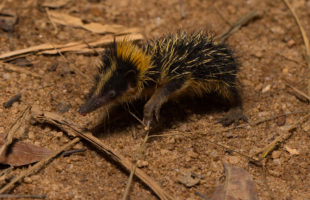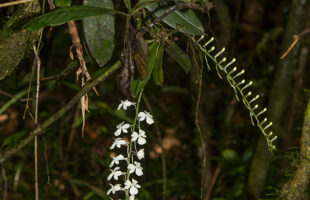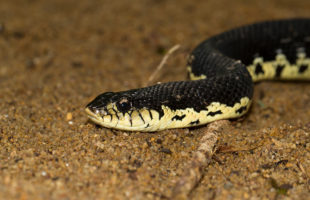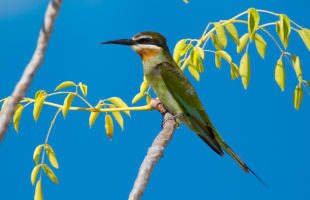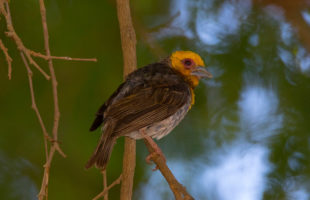Most animals that only occur in Madagascar are very special. Also the streaked tenrec has its peculiarities and is considered to be the most highly specialized of all 31 tenrec species. They belong to the hedgehog tencres – they have spines like hedgehogs, but are actually not even related to the hedgehogs. Also the spines are not completely genuine: It …
LesenRanomafana’s miniature flowers: Aerangis citrata
Aerangis citrata, also called Manta in Malagasy, is found on the entire eastern side of Madagascar. Wherever there is high humidity and permanently warm regions, it feels at home. From the coast up to 1500 m above sea level you can find this orchid. Like many orchids of Madagascar, Aerangis citrata lives epiphytically, i.e. it grows on branches of trees. …
LesenThe gardeners of the forest: Red-bellied lemurs
One does not often meet red-bellied lemurs (Eulemur rubriventer) in Madagascar, but they play an important role in the rainforest’s fragile ecosystem. Only male wear the eponymic red belly, females are white or cream colored on chest and belly. Males also have white fur below their eyes which lacks in females. At average, red-bellied lemurs weigh one and a half …
LesenAn east-west-conflict: Red-fronted lemurs
In red-fronted lemurs, colour has been distributed inequally: Only males bear the eponymic red forehead. In females, this area is grey coloured. Both genders weigh between two and three kilograms and become only half a meter in size, measured without tail. Until 2008, scientists thought the red-fronted lemur to be a subspecies of the similar looking rufous brown lemur or …
LesenMadagascar’s giant hognose snake
The Madagascar giant hognose snake (Leioheterodon madagascariensis) probably belongs to Madagascar’s most common snakes. You can meet them almost everywhere on the island: Rainforests of the east coast are part of its home range as well as the hot and dry west oft Madagascar. They can even deal with widely devastated forests. Gardens, campgrounds and hut villages may also be …
LesenMadagascar’s bee-eaters
Bee-eaters (Merops superciliosus) are among the most colourful birds in Madagascar. Here and there it is called olive bee-eater. Including its tail this small bird measures up to 30 cm in length, and it is not even 50 g heavy. It is not easy to differentiate males and females by colour: Both wear a splendid green plumage with a beige-reddish …
LesenMadagascar’s famous ring-tailed lemurs
They are the unofficial mascots of Madagascar and probably the most famous Malagasy lemurs: The ring-tailed lemurs (Lemur catta). Their portraits grace the logo of Madagascar National Parks (MNP), countless t-shirts, and company emblems. A full-grown ring-tailed lemur weighs maximally 3.5 kg. The ringed tail is 60 cm longer than the whole body which is only 40-45 cm. In contrast …
LesenSpider with lasso: Deinopis madagascariensis
Madagascar is home to many strange creatures. A particularly obscure one is the Malagasy Net-casting Spider (Deinopis madagascariensis). As the name suggests, one characteristic of this spider is special: the way it catches its food. The Net-Casting Spider lets itself be suspended from a leaf or branch by a thread. Then it stretches a kind of lasso made of spinning …
LesenThe water tank of the South
Madagascar’s south put forth many quirky, mostly water saving plants. An especially strange and unique plant is Cyphostemma montagnacii. The shape of this plant seems to be not of this world: A small, gnarly stem merges into long vines. Indeed this strange plant belongs to the grapevine family. Its branches need a tree which they can climb up and which …
LesenStrong together: The Sakalava weaver
The small, only 25 g weighing Sakalava weaver (Ploceus sakalava) only occur in Madagascar. As the name indicates, they belong to the weaver birds and are widely distributed around the island: Everywhere where the eponymous tribe of the Sakalava lives. This is mainly western Madagascar; from the deep, hot and dry South to the North. Sakalava weaver prefer dry areas. …
Lesen MADAMAGAZINE Your Magazine about Madagascar
MADAMAGAZINE Your Magazine about Madagascar
